33 Wild Animals in Ecuador [Wildlife in Ecuador]
Want to know more about the wildlife in Ecuador?
Discover 33 wild animals in Ecuador in this post, as well as interesting facts about them. 🇪🇨
Learn All About Ecuadorian Animals
Ready to learn all about Ecuadorian animals?
I’ve always been fascinated by animals, and by how they can be so different from one country to another. In this guide, we’ll focus on the many animals Ecuador has on the land, in the sky, and underwater.
I’ve split the guide into 4 categories:
- Native animals in Ecuador
- Endangered animals of Ecuador
- What is Ecuador national animal?
- How many animals native to Ecuador?
Let’s dive in right away with our first category!
Native Animals in Ecuador
Ecuador is a South American country located in the northwestern part of the continent, next to the Pacific Ocean. It also rules over the famous Galápagos Islands, and it used to be a Spanish colony. It is bordered by Peru and Colombia, and its capital and largest city is Quito, which counts more than 2,800,000 inhabitants (but more than 3,156,000 if you include the metropolitan area).
An interesting part of the country that I wanted to tackle is its wildlife. In light of that, I have listed the best of it, and I hope you will love learning what animals live in Ecuador. In fact, Ecuador is one of the world’s 17 megadiverse countries, so there’s a LOT to talk about.
Here’s the Ecuador animals list.
1. Red rock crab
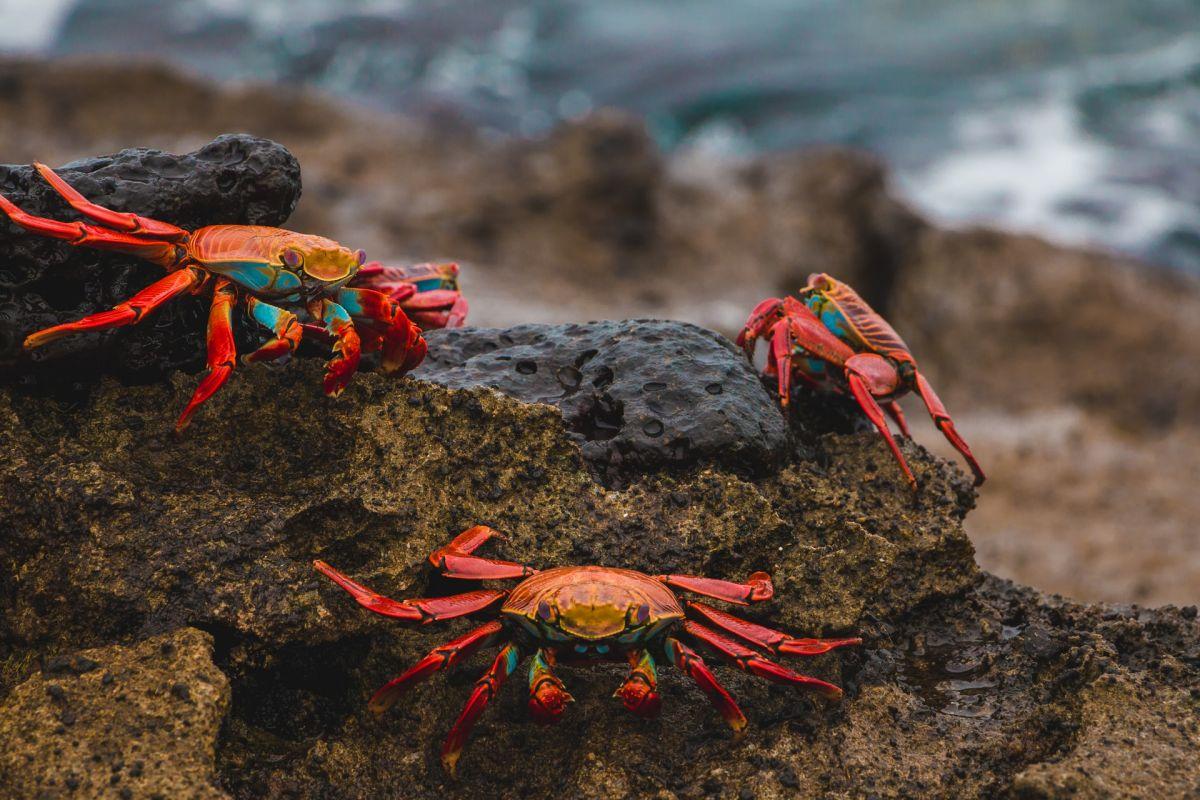
- Name: Red rock crab
- Scientific name: Grapsus grapsus
- Conservation status:
The red rock crab, also known as the Sally Lightfoot crab, is a species of crab native to the western coast of the Americas. There, it is one of the most common species, and it lives among the rocks on the beach.
Its diet is mostly made of algae, as well as dead animals and plant matter. It is capable of leaping, making it quite hard to catch. Though it is not considered edible by humans, it is rather used as bait by fishermen.
2. Osprey
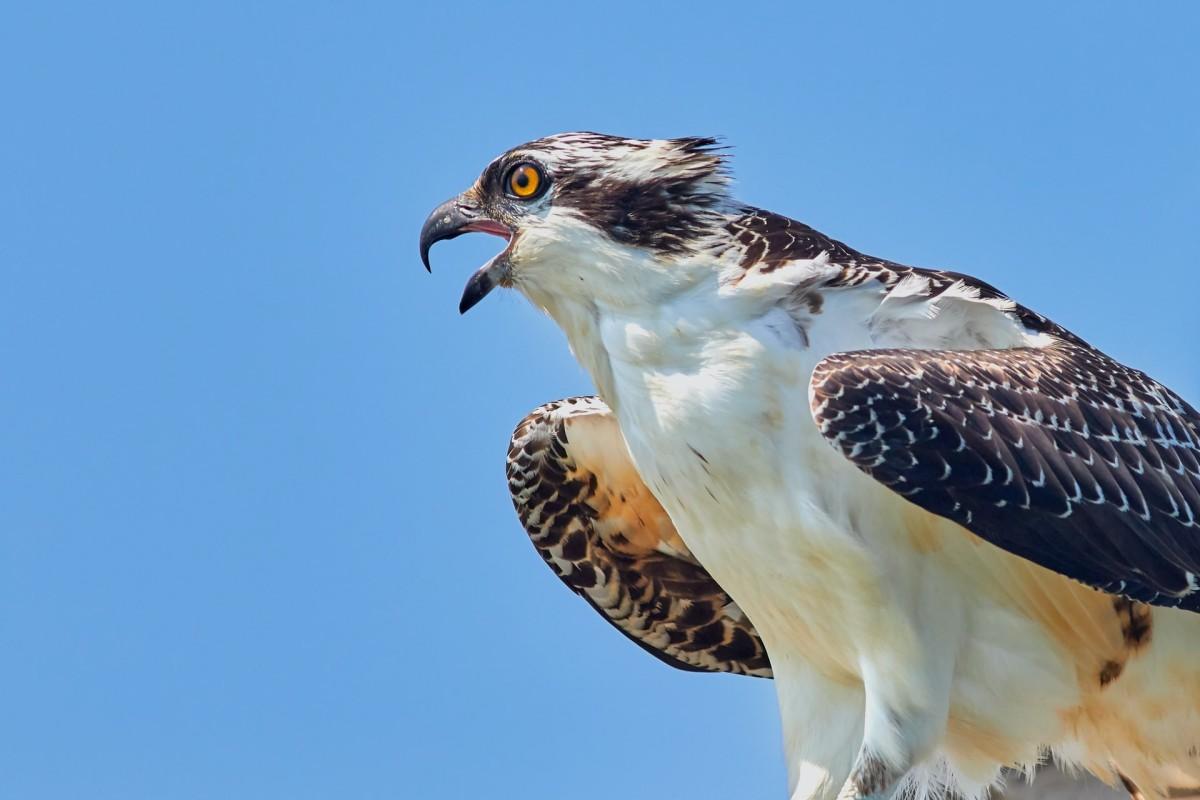
- Name: Osprey
- Scientific name: Pandion haliaetus
- Conservation status:
The osprey, also known as the fish hawk, the river hawk, or the sea hawk, is a species of fish-eating bird of prey that can be found on the Galápagos Islands. It is quite large and has brown, gray, and white plumage.
This hawk can be found in a variety of habitats, as long as it is close to a body of water. As its name suggests, its diet is almost entirely made of fish.
3. Nine-banded armadillo
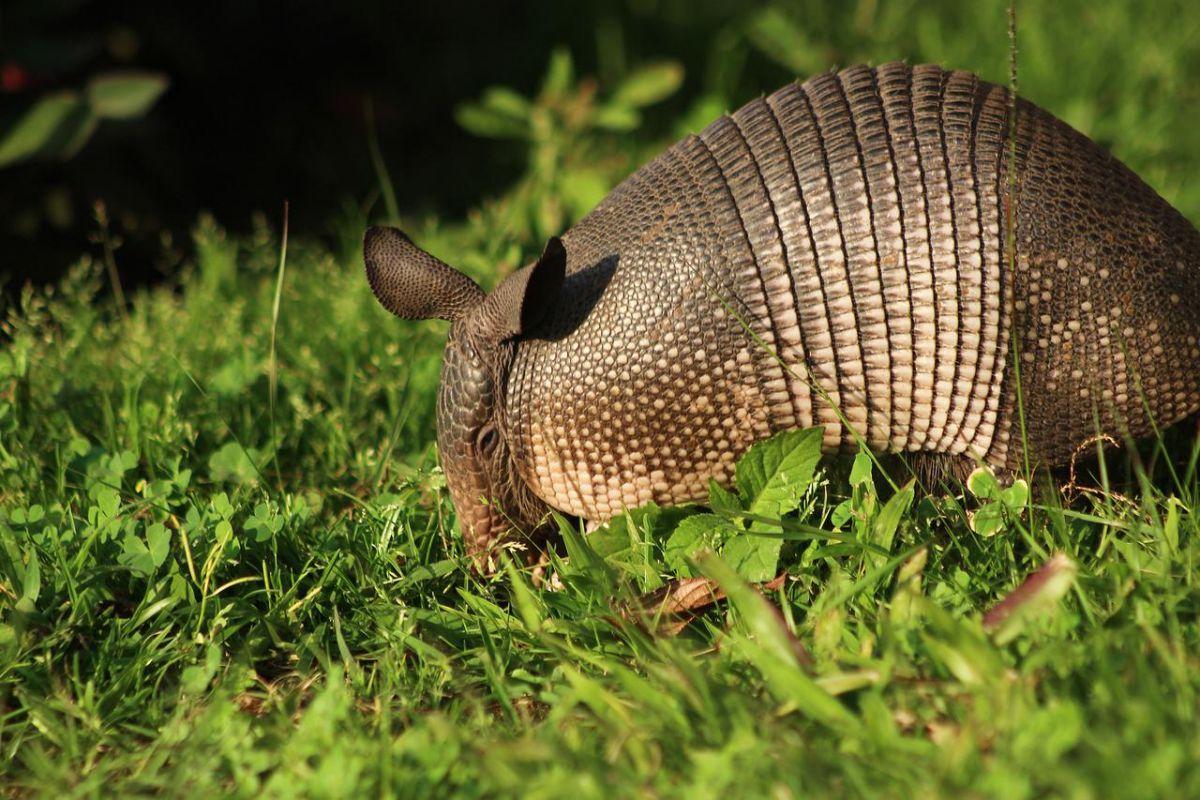
- Name: Nine-banded armadillo
- Scientific name: Dasypus novemcinctus
- Conservation status:
The nine-banded armadillo, also known as the common long-nosed armadillo or the banded long-nosed armadillo, is one of the few species of armadillos in the world, and one of the least threatened as well!
It is a nocturnal animal that lives in rainforests, dry scrub, and grassland, and is an insectivore that eats termites, small invertebrates, and ants. Surprisingly enough, it can jump quite high in the air if frightened (91 to 122 cm / 3 to 4 ft), making it a real danger on roads!
4. Humboldt’s squirrel monkey
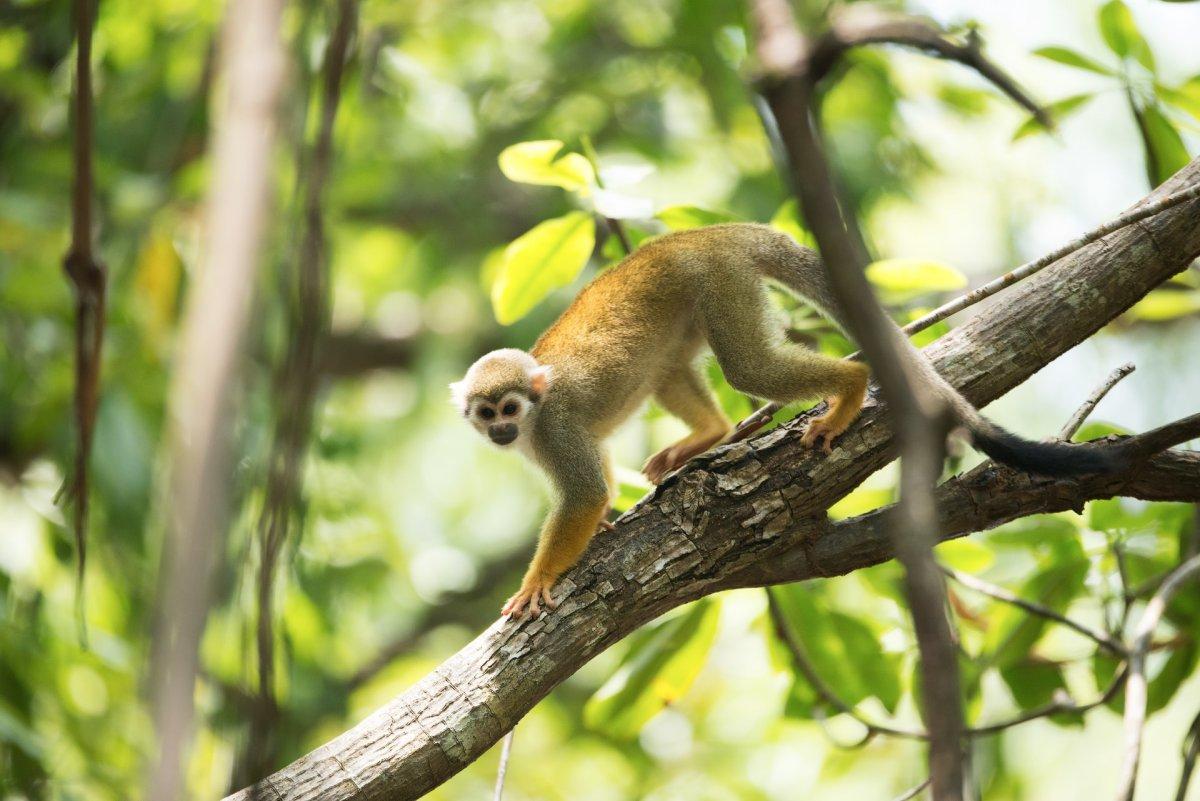
- Name: Humboldt’s squirrel monkey
- Scientific name: Saimiri cassiquiarensis
- Conservation status:
Squirrel monkeys are some of the tiniest and cutest species of monkeys you will ever see. Humboldt’s squirrel monkey is one of them, and it can be found in mainland Ecuador, Brazil, Venezuela, Peru, and Colombia.
This little primate eats fruits when it can, but also insects. It has golden-yellow fur, and is a popular pet, due to its playful and curious nature; however, it requires a lot of food and space to thrive.
5. Hoffmann’s two-toed sloth
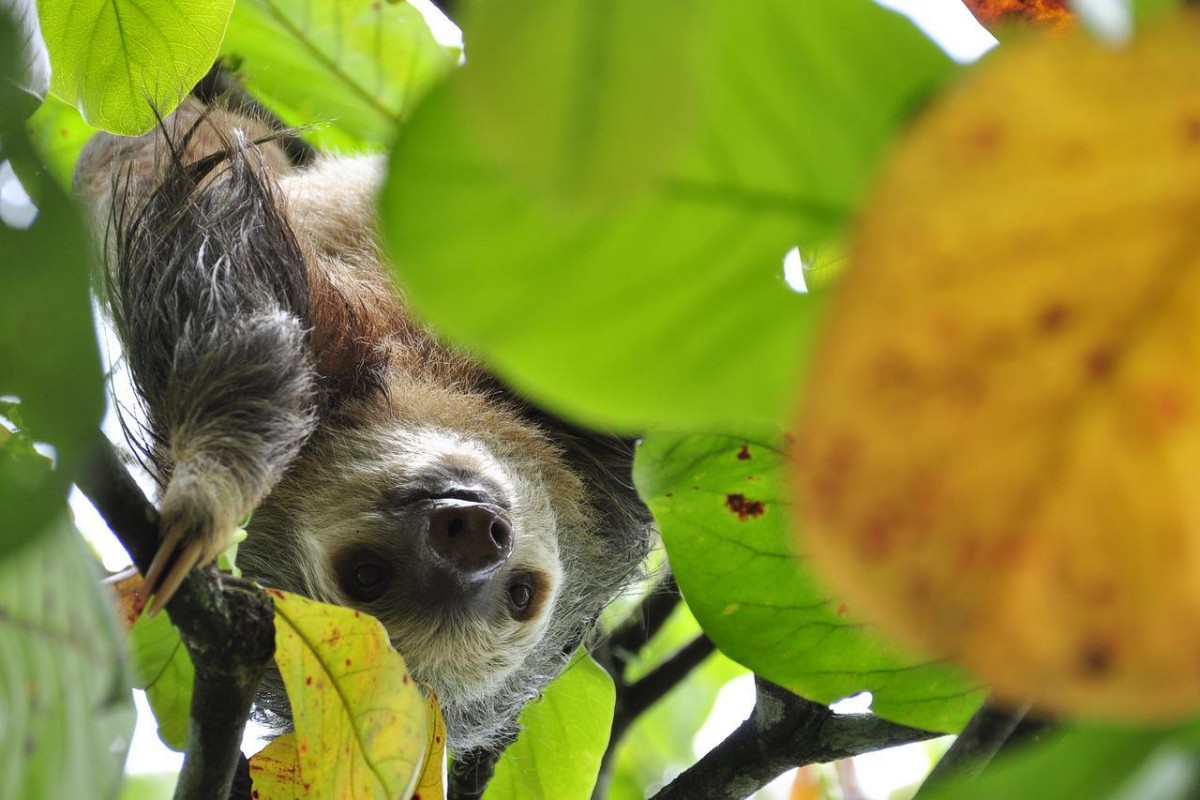
- Name: Hoffmann’s two-toed sloth
- Scientific name: Choloepus hoffmanni
- Conservation status:
Sloths are definitely peculiar creatures and some of the most iconic emblems of South American wildlife in general. In Ecuador, you will find Hoffmann’s two-toed sloth, also known as the northern sloth. This animal is nocturnal, arboreal, and solitary, and, as you know… is very… very… slow.
Most of the time, you will see this sloth in a tree, except if it moves from one tree to another.
6. Spectacled bear
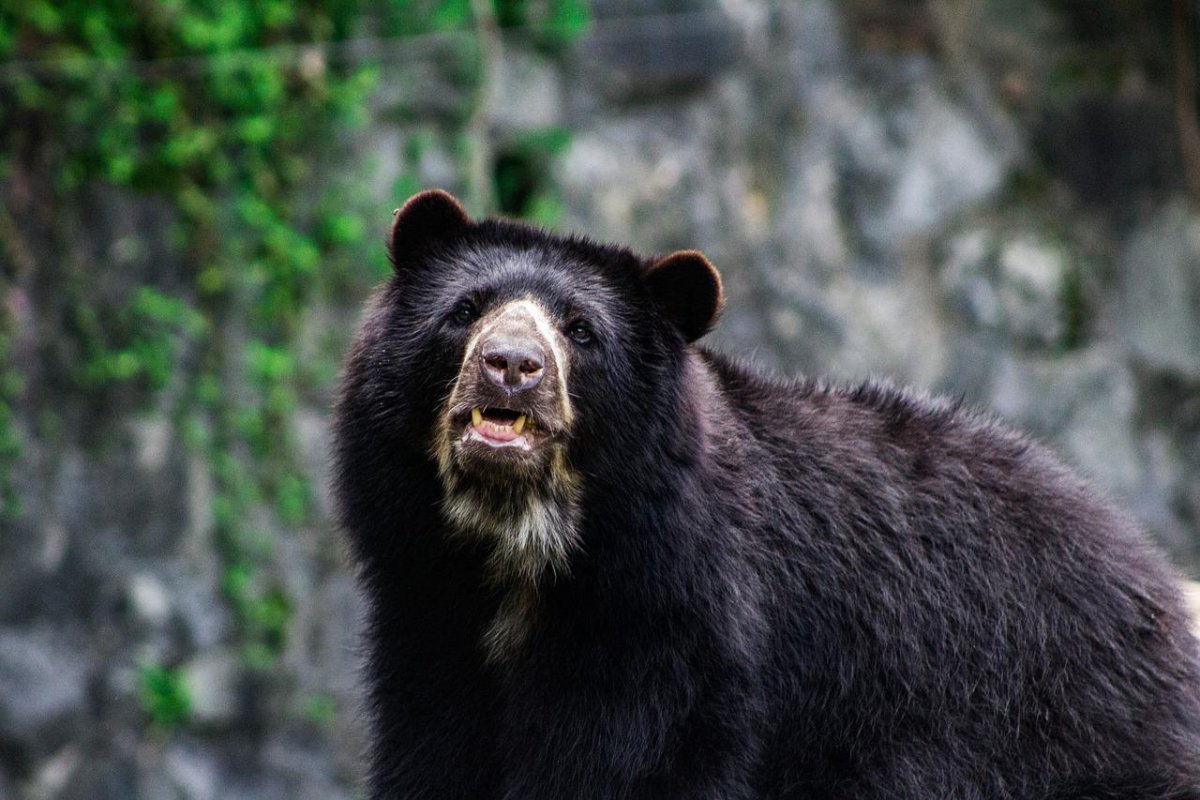
- Name: Spectacled bear
- Scientific name: Tremarctos ornatus
- Conservation status:
The spectacled bear also called the mountain bear or the Andean short-faced bear is a species of bear native to South America. As a matter of fact, it is the only surviving species of bear native to South America, and it is considered vulnerable due to habitat loss.
It can be found in a narrow strip across northwestern South America, with a range dwindling by the minute.
7. Pinta Island tortoise
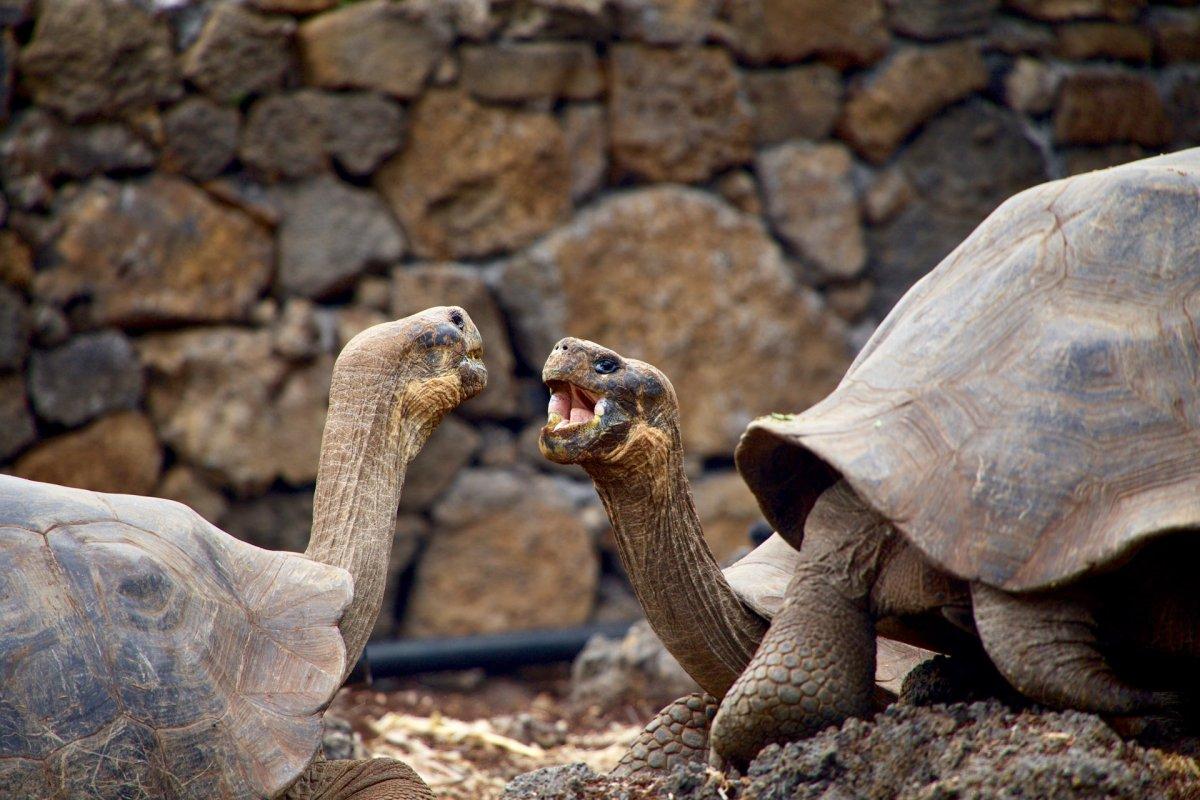
- Name: Pinta Island tortoise
- Scientific name: Chelonoidis niger abingdonii
- Conservation status:
The Galápagos tortoises are probably the most famous animals from the archipelago. There are several subspecies of them, and the Pinta Island tortoise might be one of the most well-known ones, as it became extinct when the last member of the species, Lonesome George, died in 2012. George was more than 100 years old and was discovered on Pinta Island in 1971. It is now an important symbol for conservation programs in the entire world.
8. Yellow-bellied sea snake
- Name: Yellow-bellied sea snake
- Scientific name: Hydrophis platurus
- Conservation status:
The yellow-bellied sea snake is a species of venomous snake that can be found in almost all tropical oceanic waters, except for the Atlantic Ocean.
As its name suggests, its underbelly is entirely yellow, while its back is brown. It is perfectly adapted to living at sea, from eating to mating and giving birth. Its venom is very potent, just like any other sea snake, as it can cause neuromuscular paralysis or direct renal damage.
9. Silky anteater
- Name: Silky anteater
- Scientific name: Cyclopes didactylus
- Conservation status:
The silky anteater, also known as the pygmy anteater, is a species of anteater native to southern Mexico and much of northwestern South America. It is the smallest of all anteaters, and is completely arboreal!
This animal is nocturnal, and its hind feet are great for climbing. It is solitary and gives birth to a single young, once or twice per year. Its claws are very sharp, and it uses them to defend itself when threatened.
10. Amazonian manatee
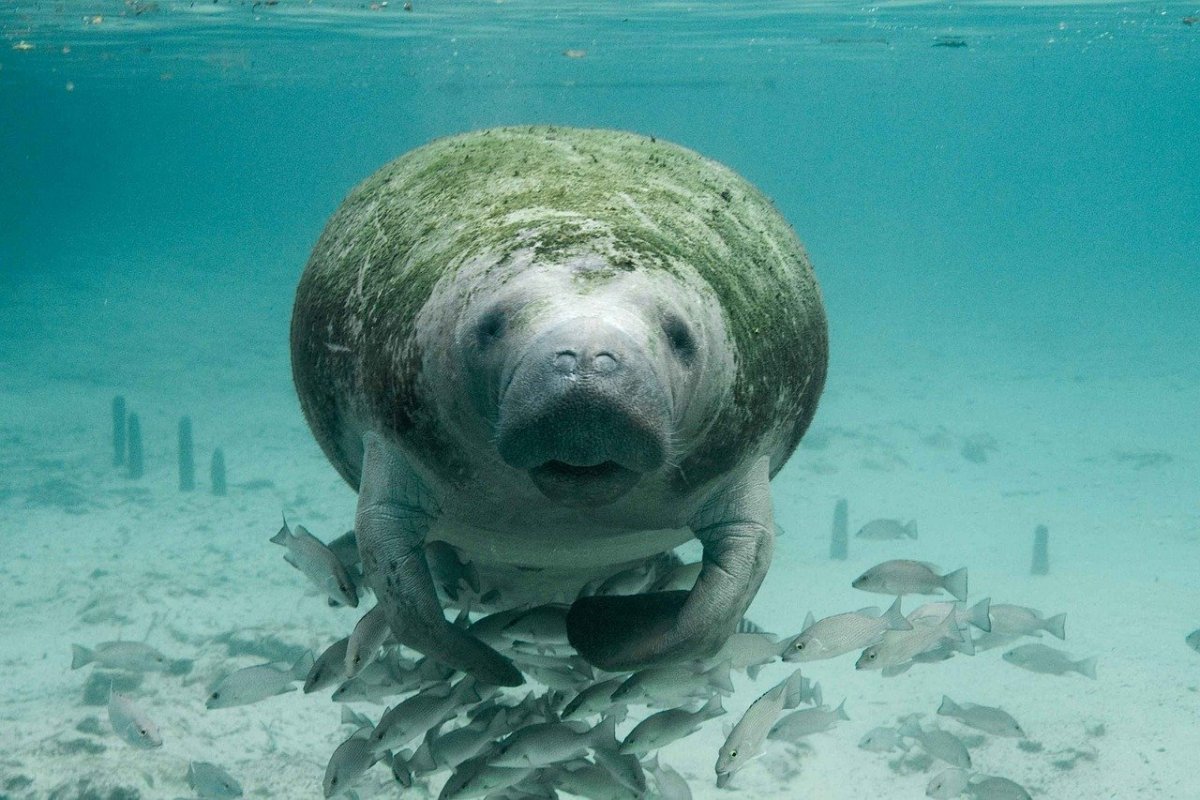
- Name: Amazonian manatee
- Scientific name: Trichechus inunguis
- Conservation status:
The Amazonian manatee is a species of manatee native to Ecuador, Brazil, Colombia, Peru, Venezuela, and Bolivia. It has thin, gray, or brown skin, with fine hairs all over its body, and is the smallest of all manatee species.
In fact, this manatee is the only one that entirely lives in freshwater habitat. It can remain underwater for a pretty long time, but it usually surfaces for air about every 5 minutes.
11. Galápagos rice rat
- Name: Galápagos rice rat
- Scientific name: Aegialomys galapagoensis
- Conservation status:
The Galápagos rice rat, also known as the Galápagos ozyromys, is a species of rodent endemic to the Galápagos Islands. It can only be found in the eastern parts of the archipelago, either on one or two islands (Santa Fé Island, and maybe Santiago Island).
This rodent is nocturnal most of the time, but it can also be active before sunset after spending the day resting in crevices.
12. Hoary bat
- Name: Hoary bat
- Scientific name: Aeorestes cinereus
- Conservation status:
The hoary bat is a species of vesper bat native to the majority of the Americas, including the Galápagos Islands.
Though it is considered of least concern, for now, the hoary bat is severely threatened by wind turbines, especially during migration in the spring and fall. The main reason for this is that bats identify the big structure as a tree they could possibly use for rest.
13. Monk saki
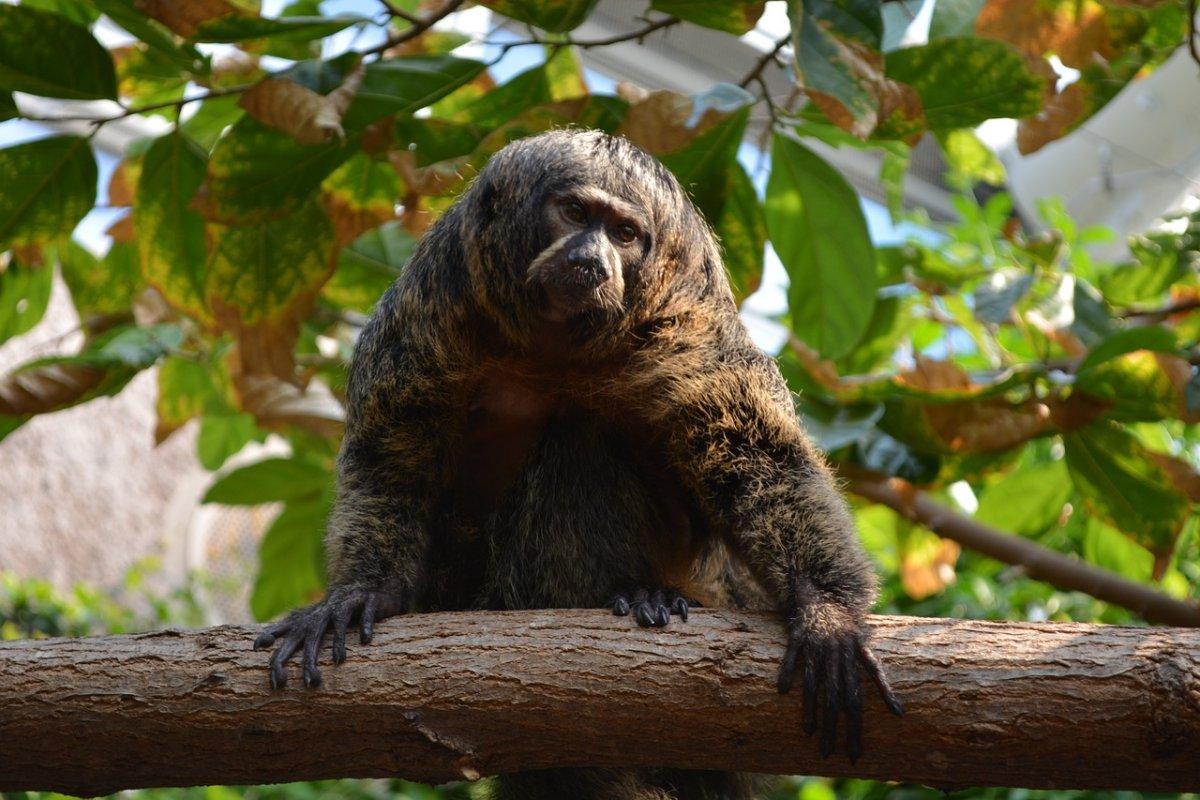
- Name: Monk saki
- Scientific name: Pithecia monachus
- Conservation status:
As you will quickly see, there are many primates in Ecuador, and the monk saki, also known as Geoffroy’s monk saki, is one of them. It is a type of New World monkey native to northwestern South America, more precisely in Ecuador, Peru, and Brazil.
This primate is very shy and wary, as well as totally arboreal, making it quite hard to spot. Its diet is made of fruits, leaves, honey, and berries, but also of small mammals and birds sometimes.
14. Brazilian guinea pig
- Name: Brazilian guinea pig
- Scientific name: Cavia aperea
- Conservation status:
The Brazilian guinea pig is a species of mammal native to Brazil, Ecuador, Argentina, Bolivia, and Venezuela, among other countries. Compared to the domestic guinea pig, this species is much longer and narrower, though both of them were already successfully mated.
This guinea pig is a herbivore that feeds on herbs and grasses and is diurnal. Even though it does not dig a burrow, it makes a complex maze of tunnels instead.
15. Black-headed spider monkey
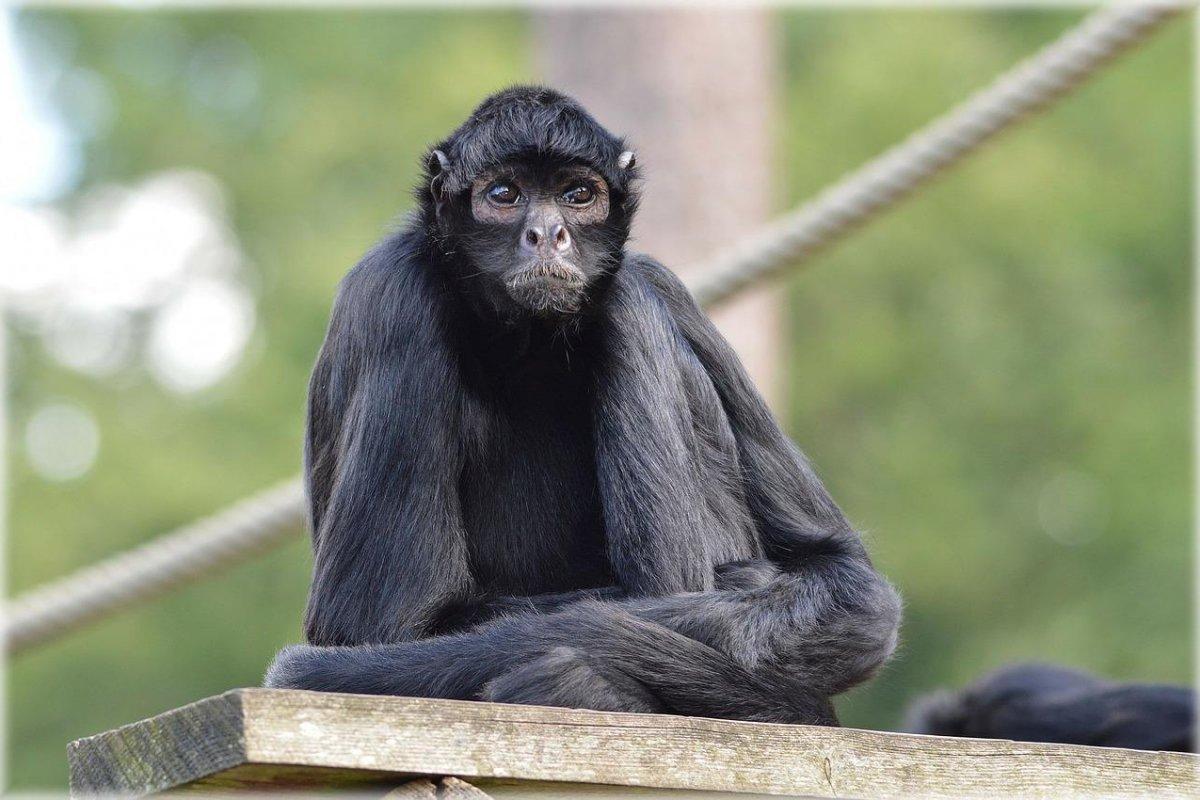
- Name: Black-headed spider monkey
- Scientific name: Ateles fusciceps
- Conservation status:
The black-headed spider monkey is a species of New World monkey native to Central and South America. It lives in Ecuador, Colombia, and Panama, usually in tropical and subtropical humid forests, at altitudes between 100 and 1,700 m / 330 and 5,580 ft.
As its name suggests, this primate has a black body. It is a diurnal and arboreal monkey that is severely endangered, as its global population is estimated to decline by 50 percent over 45 years, due to human encroachment and hunting.
16. Galápagos sea lion

- Name: Galápagos sea lion
- Scientific name: Zalophus wollebaeki
- Conservation status:
The Galápagos sea lion is a very social species of sea lion native to the Isla de la Plata, which also belongs to Ecuador, and, of course, the Galápagos Islands. It can easily be seen sun-bathing on rock groups or gliding through the waves.
It is naturally playful, has a loud bark, and is very agile, which is why anyone will feel very welcomed on the island when seeing the Galápagos sea lion!
17. Galápagos land iguana

- Name: Galápagos land iguana
- Scientific name: Conolophus subcristatus
- Conservation status:
The Galápagos land iguana is a species of lizard endemic to the Galápagos Islands. Funnily enough, it was described by Charles Darwin as an “ugly animal” with a “singularly stupid appearance” from a certain angle!
This lizard is herbivorous, but can also be an opportunistic omnivore and feed on carrion, centipedes, and insects. It can live up to 69 years as well, and there are about 5,000 to 10,000 individuals left, as it has been slowly wiped out by introduced species such as rats, dogs, and cats.
18. Golden-mantled tamarin
- Name: Golden-mantled tamarin
- Scientific name: Leontocebus tripartitus
- Conservation status:
The golden-mantled tamarin is a species of tamarin native to South America. It can only be found in a very small area shared by Peru and Ecuador, around the eastern border of Ecuador. Like many other primates, it is both diurnal and arboreal and walks and leaps with its four legs.
This monkey lives in groups of 4 to 9 individuals, with only one female breeding per group, not because of choice, but because the urine of the dominant female suppresses the reproductive cycles of the others! Also, interestingly enough, it gives birth to twins.
19. Ecuadorian capuchin
- Name: Ecuadorian capuchin
- Scientific name: Cebus aequatorialis
- Conservation status:
The Ecuadorian capuchin, also known as the Ecuadorian white-fronted capuchin, is a species of monkey native to the tropical forests of Ecuador and Peru. While it used to be classified as a subspecies of the famous white-fronted capuchin, it was declared a separate species quite recently.
Sadly, it is considered critically endangered, as there are only about 300 individuals in the wild, mostly due to habitat fragmentation and loss.
20. Giant anteater
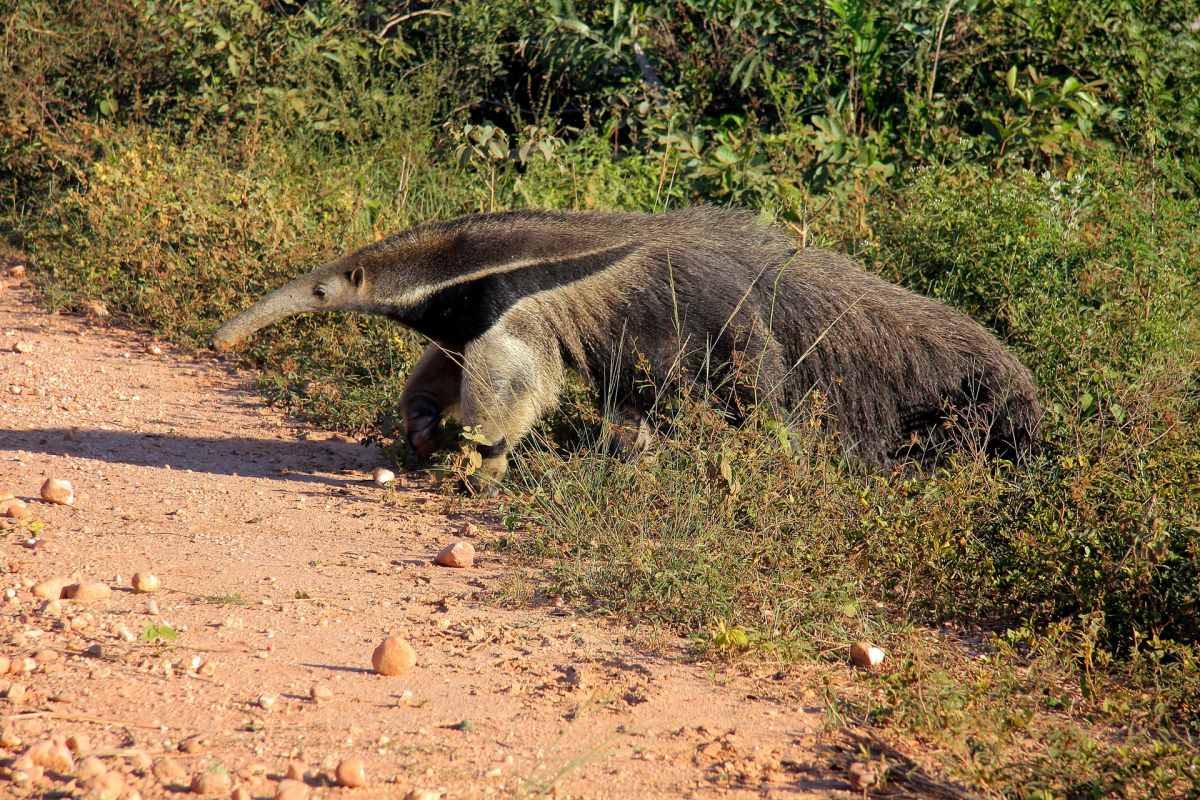
- Name: Giant anteater
- Scientific name: Myrmecophaga tridactyla
- Conservation status:
Alongside sloths, anteaters are great symbols of South American wildlife. After the smallest of all anteaters, the silky anteater, it is now time for the giant anteater, the biggest of its family.
This peculiar animal can be found in a multitude of habitats, from rainforest to grassland. It is a solitary animal that uses its extremely strong claws to dig out ants and termites. It is currently listed as vulnerable due to habitat destruction, poaching for bushmeat and fur, and fire.
21. Common bottlenose dolphin

- Name: Common bottlenose dolphin
- Scientific name: Tursiops truncatus
- Conservation status:
The common bottlenose dolphin, also known as the Atlantic bottlenose dolphin, is one of the most exotic and widely appreciated animals on the planet. It lives in temperate and tropical waters of the world, and it is a very familiar species due to its fame in the media and in marine parks.
This mammal is a peak example of communication and of intelligence in the animal world: it uses squeaks emitted from its blowhole, whistles, and body language to communicate with others very frequently.
22. Bicolored-spined porcupine
- Name: Bicolored-spined porcupine
- Scientific name: Coendou bicolor
- Conservation status:
The bicolored-spined porcupine is a species of rodent native to Ecuador, Peru, Bolivia, and Colombia. It is an arboreal and nocturnal rodent that can be quite hard to spot, though it is relatively large.
Just like other porcupines, its body is covered in dense, sharp spines it uses to defend itself very efficiently. Also, this species has a fully prehensile tail that has no spine on it, and that helps the bicolored-spined porcupine with balance and climbing trees.
23. Pacarana
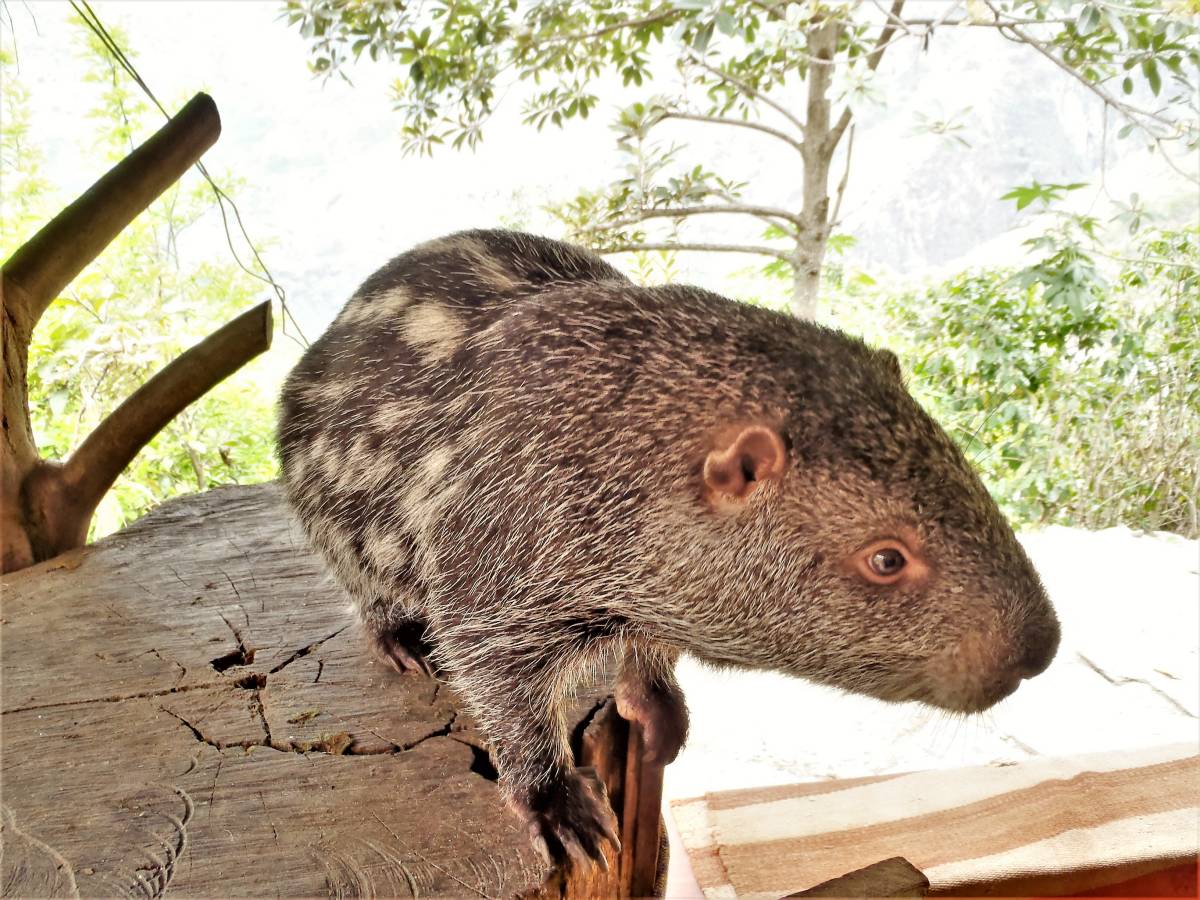
- Name: Pacarana
- Scientific name: Dinomys branickii
- Conservation status:
The pacarana, though considered of least concern, is a rare species of rodent native to northwestern South America. It is slow-moving and has a chunky body. When eating, it will sit on its hind legs and grasp food with its fore paws.
This rodent can only be found in tropical forests, and it is active by night, which is why it is considered rare. It is called this way by native people due to its resemblance with the paca, another rodent from another family: pacarana means “false paca” in Tupi.
24. South American tapir
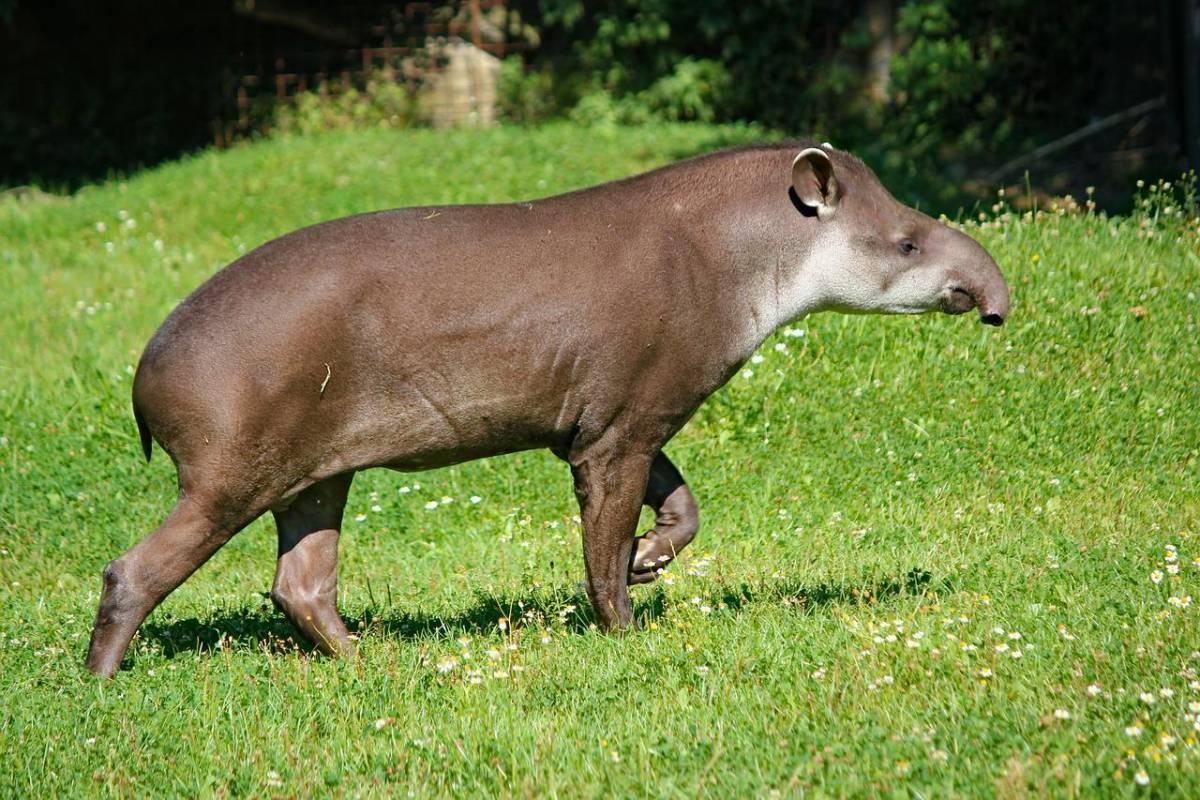
- Name: South American tapir
- Scientific name: Tapirus terrestris
- Conservation status:
The South American tapir has many names: also called the lowland tapir, the maned tapir, the Brazilian tapir, and the Amazonian tapir, it is one of the four species of tapir in the world, and is the largest native terrestrial mammal in the Amazon.
Believe it or not, this large tapir is a great swimmer and diver, but can also move quickly on land. As a calf, it is brown with white stripes, and it feeds on leaves and branches throughout its life.
25. Tayra
- Name: Tayra
- Scientific name: Eira barbara
- Conservation status:
Though you might have never heard of it, the tayra is a species of weasel native to the Americas. It is omnivorous, as it feeds on rodents, small mammals, lizards, invertebrates, fruit, honey, and birds.
Its social behavior is still not fully understood: sometimes considered a solitary animal, it was also seen in large groups, though that might have been a mother with her larger offspring. The tayra is an excellent climber that avoids water but can jump from one treetop to another when chased.
26. South American cougar
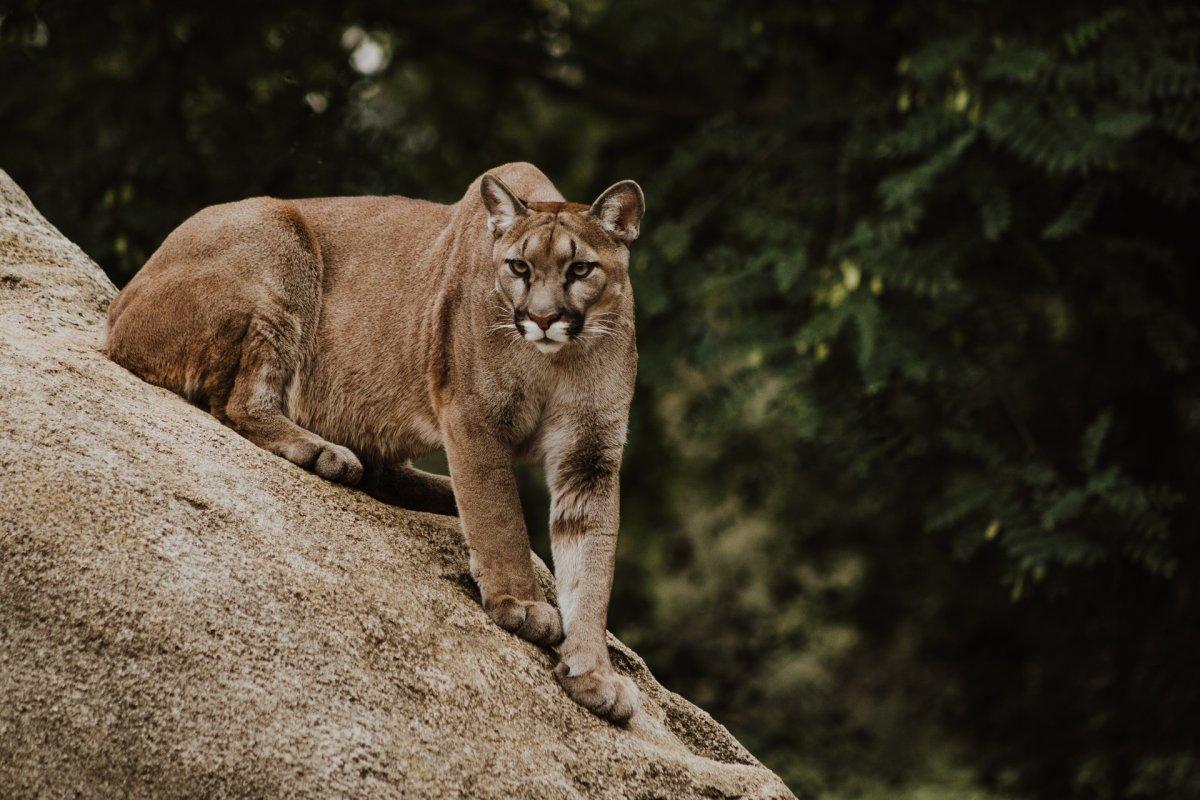
- Name: South American cougar
- Scientific name: Puma concolor concolor
- Conservation status:
As much as the cougar represents North America’s mountains perfectly, it can also be found in the southern part of the continent. There, it is known as the South American cougar, and it is a large wild cat native to the Americas.
Randomly encountering one while hiking is the scariest experience many Americans have lived, but this animal is quite elusive and solitary. It is an ambush predator that hunts for a wide range of prey, from insects and rodents to deers and other ungulates.
27. Pampas cat
- Name: Pampas cat
- Scientific name: Leopardus colocola
- Conservation status:
Yes, the Pampas is known to be the region around Argentina, Uruguay, and southern Brazil, but the Pampas cat can still be found as far north as Ecuador. It also lives in grassland, dry forest, and shrubland at up to 5,000 m / 16,000 ft and is a tiny bit bigger than a domestic cat, with a bushier tail.
Not much is known about the hunting habits and the behavior of the Pampas cat. It most likely preys on birds and small mammals though, such as guinea pigs and other rodents.
28. Jaguar

- Name: Jaguar
- Scientific name: Panthera onca
- Conservation status:
You had to wait for it, but it is finally here! Arguably the most iconic South American animal, the jaguar, can indeed be found in Ecuador. It is one of the largest cat species in the world and the largest one in the Americas.
The jaguar, though it is a dreadful predator that lives a solitary and opportunistic life, is endangered by habitat fragmentation and loss as well as poaching for trade and killings in conflict situations.
29. South American gray fox
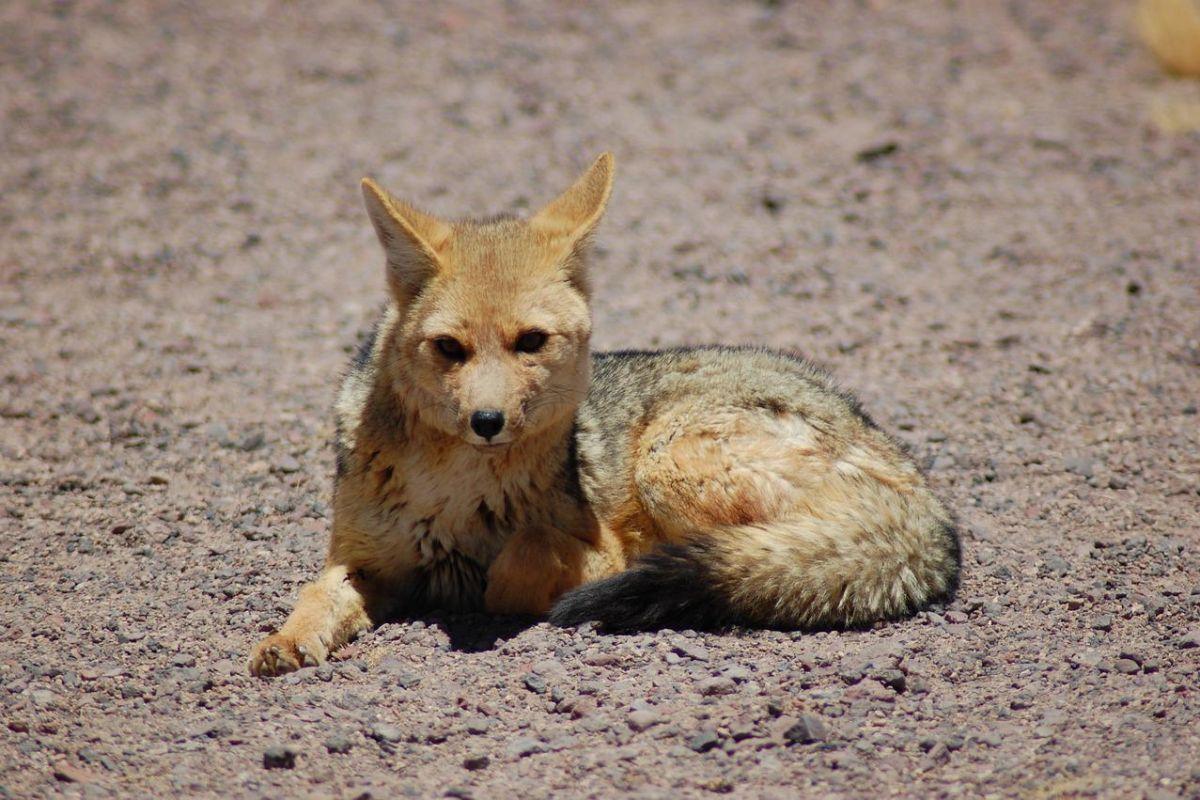
- Name: South American gray fox
- Scientific name: Lycalopex griseus
- Conservation status:
The South American gray fox, also known as the gray zorro, the Patagonian fox or the chilla, is a species of false fox endemic to South America.
Although it mostly lives in Chile and Argentina, several scattered populations can be found throughout the entirety of South America. This fox is solitary and has long been hunted for its pelt. It can sometimes be seen near human habitations looking for food such as sheep and chickens.
30. Crab-eating raccoon
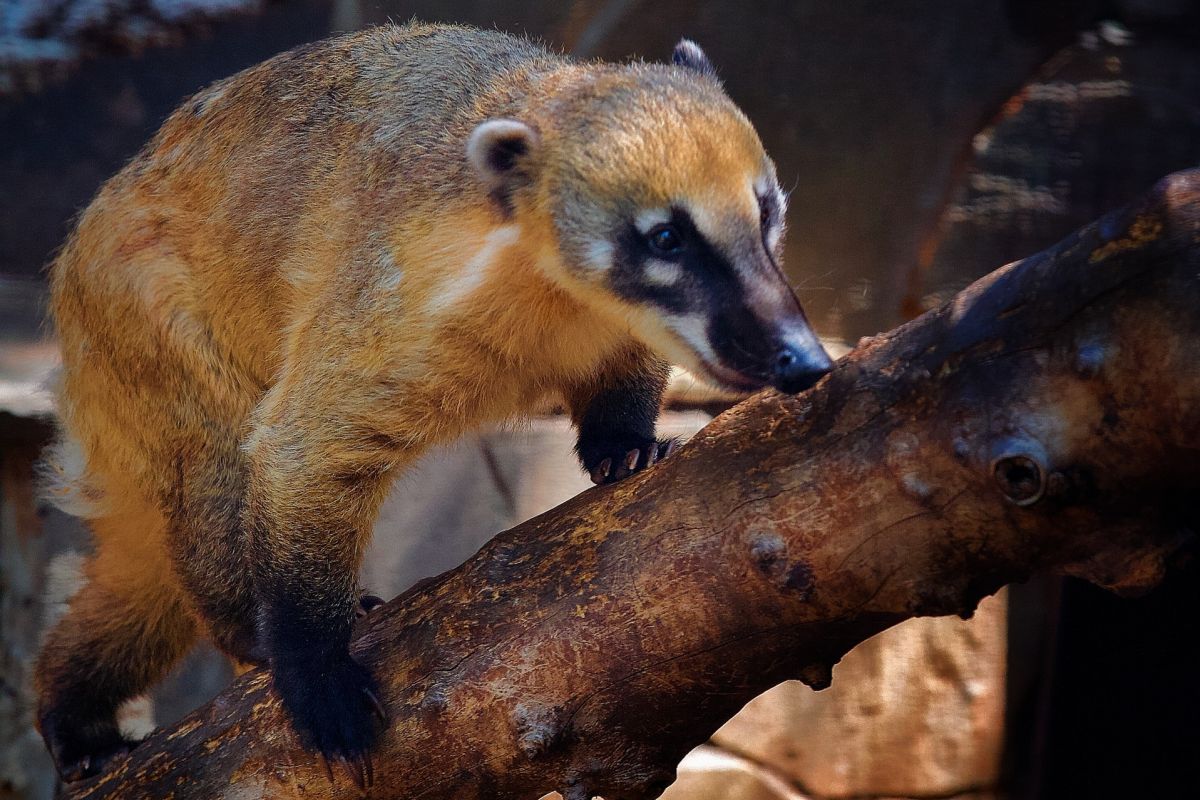
- Name: Crab-eating raccoon
- Scientific name: Procyon cancrivorus
- Conservation status:
You might be wondering about raccoons in Ecuador, and well, there is the crab-eating raccoon, also known as the South American raccoon!
This mammal species is found in most of the northern part of South America, into northern Argentina. It is nocturnal and solitary, and even though it largely feeds on crab, it can also eat crustaceans, lobsters, clams, and oysters. Females are the only ones raising the offspring, as males do not help at all.
31. Western mountain coati
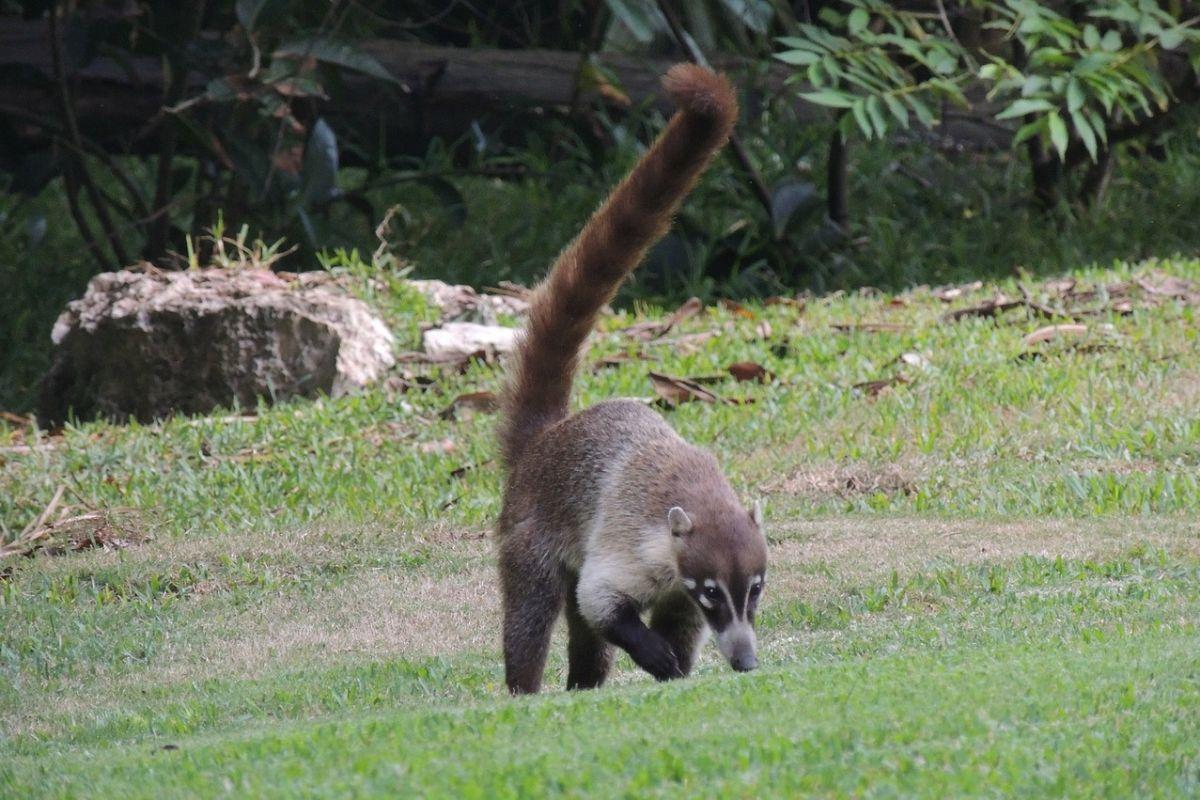
- Name: Western mountain coati
- Scientific name: Nasuella olivacea
- Conservation status:
The western mountain coati, also known as the western dwarf coati, is a species of coati native to the cloud forests of Colombia and Ecuador. Coatis are definitely unique creatures that can mostly be found in the Americas.
This coati species is very poorly known, and it is rare, even in captivity. It is also quite hard to identify, as it is quite often confused with another species.
32. Southern elephant seal
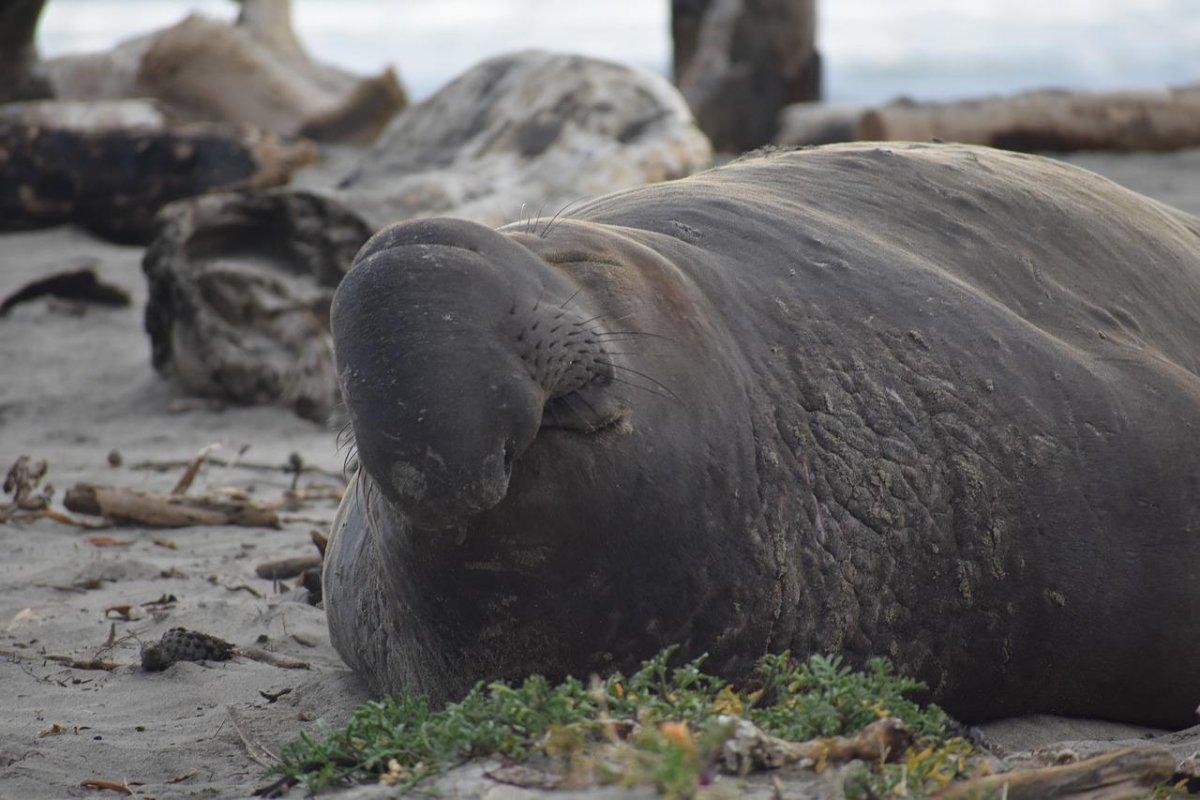
- Name: Southern elephant seal
- Scientific name: Mirounga leonina
- Conservation status:
The southern elephant seal is the largest member of the order Carnivora and the largest marine mammal outside of cetaceans. It is named this way due to its massive size as well as its characteristic large outgrowth on the head, known as proboscis (only for males).
This animal lives in the southernmost parts of the planet, and is much larger than its northern counterpart, as it weighs about 40 percent more!
33. Giant otter
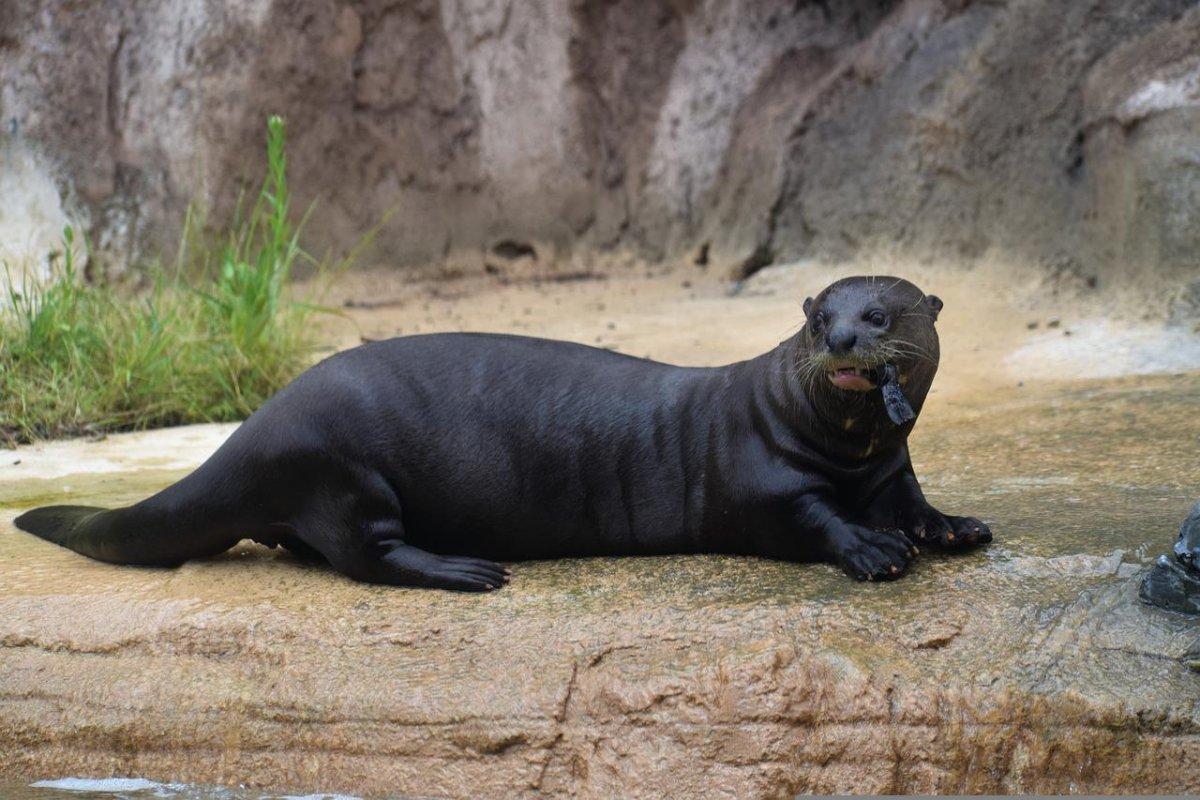
- Name: Giant otter
- Scientific name: Pteronura brasiliensis
- Conservation status:
The giant otter, also known as the giant river otter, is a species of otter and the longest member of the sneasel family. Unlike other mustelids, it is social and lives in groups of 3 to 8 members.
This otter can be found in most of the northern part of South America. Its body is adapted to aquatic habitats, as it has dense fur and webbed feet. Its diet is almost entirely made of fish, but the giant otter may also eat snakes, turtles, caimans, and crabs.
—
So there you have them, these were my 33 Ecuador native animals. I hope you enjoyed this list and that you learned something new today.
In case you want to learn more about animals in the country, feel free to keep reading, as I still have lots of things to tell you about:
Endangered Animals of Ecuador
This is definitely the saddest part of the list, but it is very important to raise awareness. Because of this, let’s go through the list of endangered animals in Ecuador.
Here are the animals in danger of extinction in Ecuador.
- Pinta giant turtle
- Floreana giant tortoise
- Galapágos Giant Rat
- Longnose harlequin frog
- Indefatigable galapagos mouse
- and 2 more…
- Eastern Santa Cruz giant tortoise
- Tandayapa Andes toad
- Quito stubfoot toad
- Lilacine amazon
- Rio pescado stubfoot toad
- and 78 more…
- Burrowes’ giant glass frog
- Horned marsupial frog
- Floreana mockingbird
- Bonnethead shark
- Pacific nurse shark
- and 153 more…
To see the full list of endangered species in Ecuador, head over to the International Union for Conservation of Nature’s Red List.
What is the National Animal of Ecuador?
The national animal of Ecuador is the Andean condor.
The condor is one of the most majestic birds in the world. It is a species of black vulture with white feathers around the base of its neck, as well as large white patches on its wings.
It is a notorious scavenger that feeds on carrion, usually that of cattle or deer. It is a bird of record: not only does it have one of the longest lifespans, with up to 70 years, but it is also the largest flying bird in the world, with a wingspan of up to 3.3 m / 10 ft 10 in!
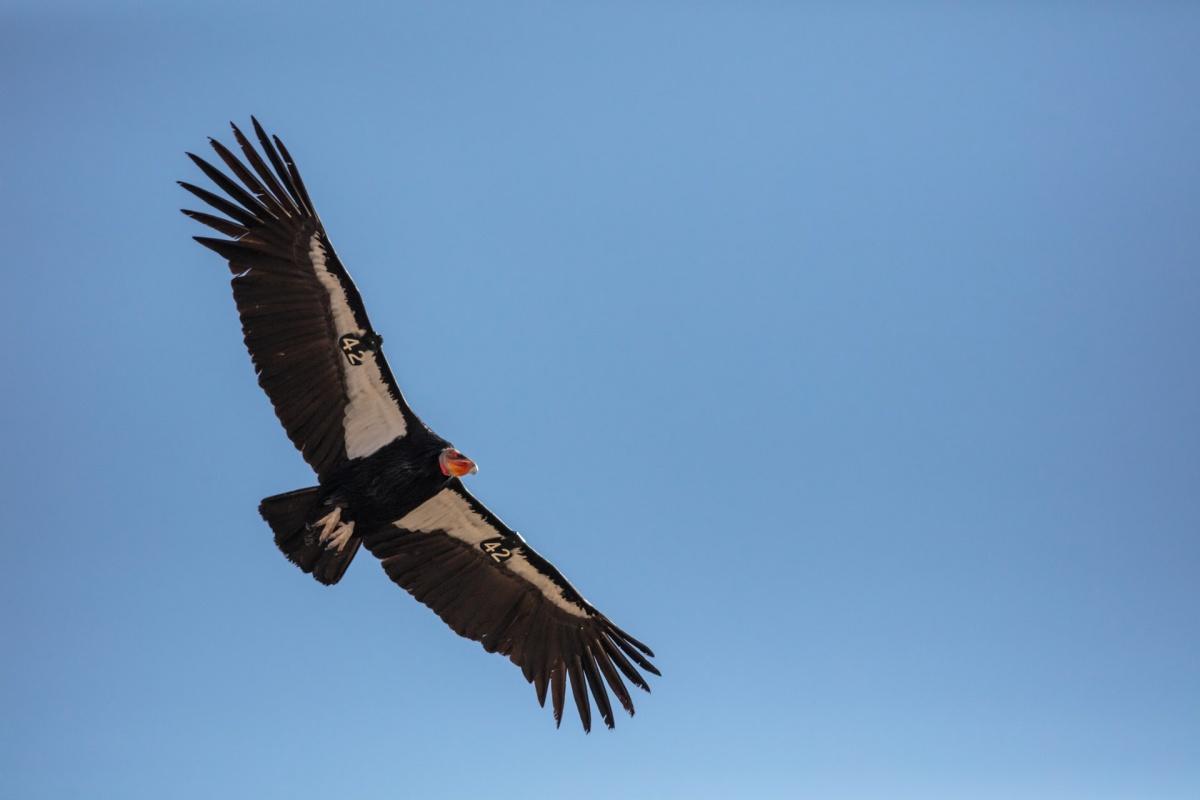
How Many Animals Native to Ecuador?
What is the diversity of native animals of Ecuador?
Let’s look at the total number of species of Chordata (mammals, birds, fishes, and reptiles).
Total number of animal species in Ecuador: 4,337 (14,422 in total in South America)
More About Animals in the World!
Loved these Ecuador wildlife facts? Want to see what animals live in other countries?
Then check out these posts:
Or click here to see ALL the facts up on the blog! Spoiler alert: there’s A LOT of them.
Share the knowledge! Click on the buttons below to share information about these famous animals in Ecuador with your friends, and help them learn more about the world 🙂
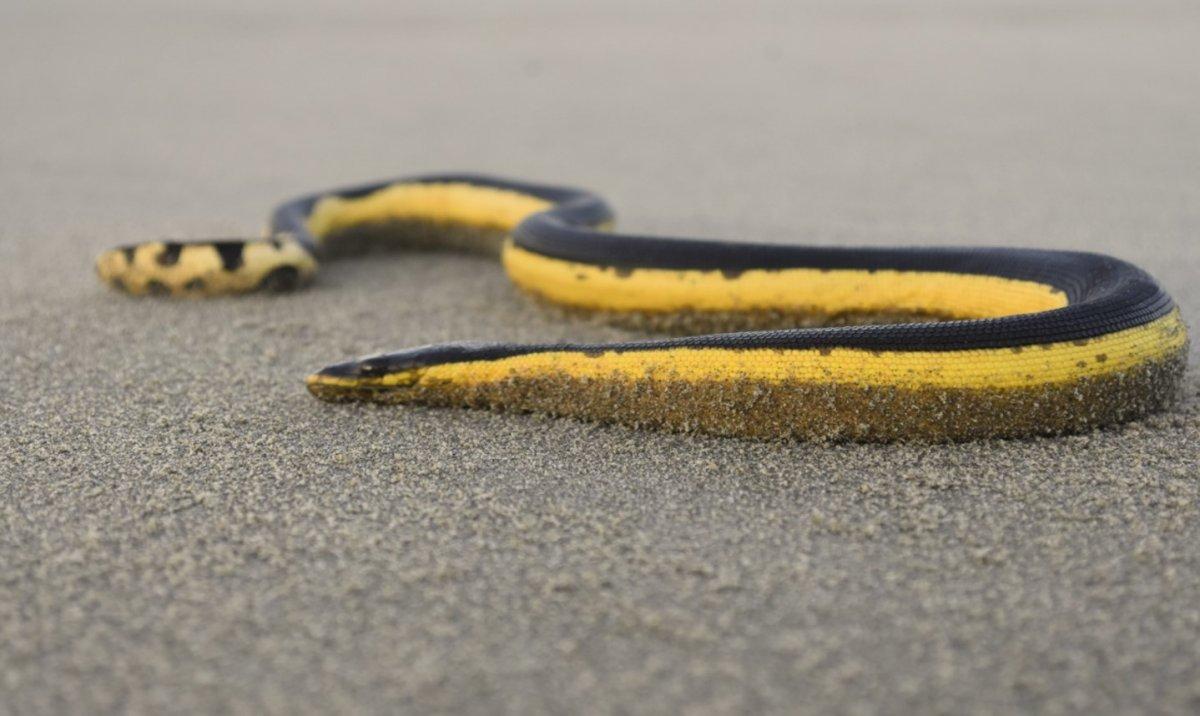
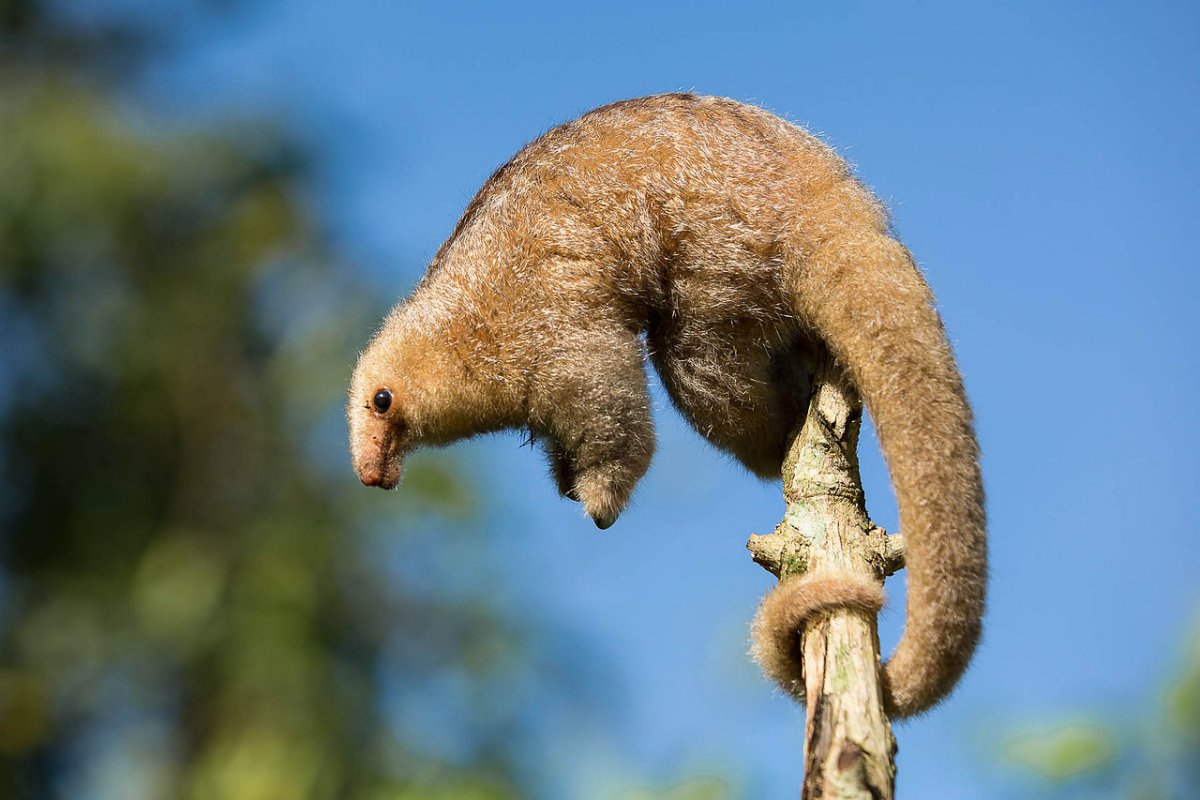
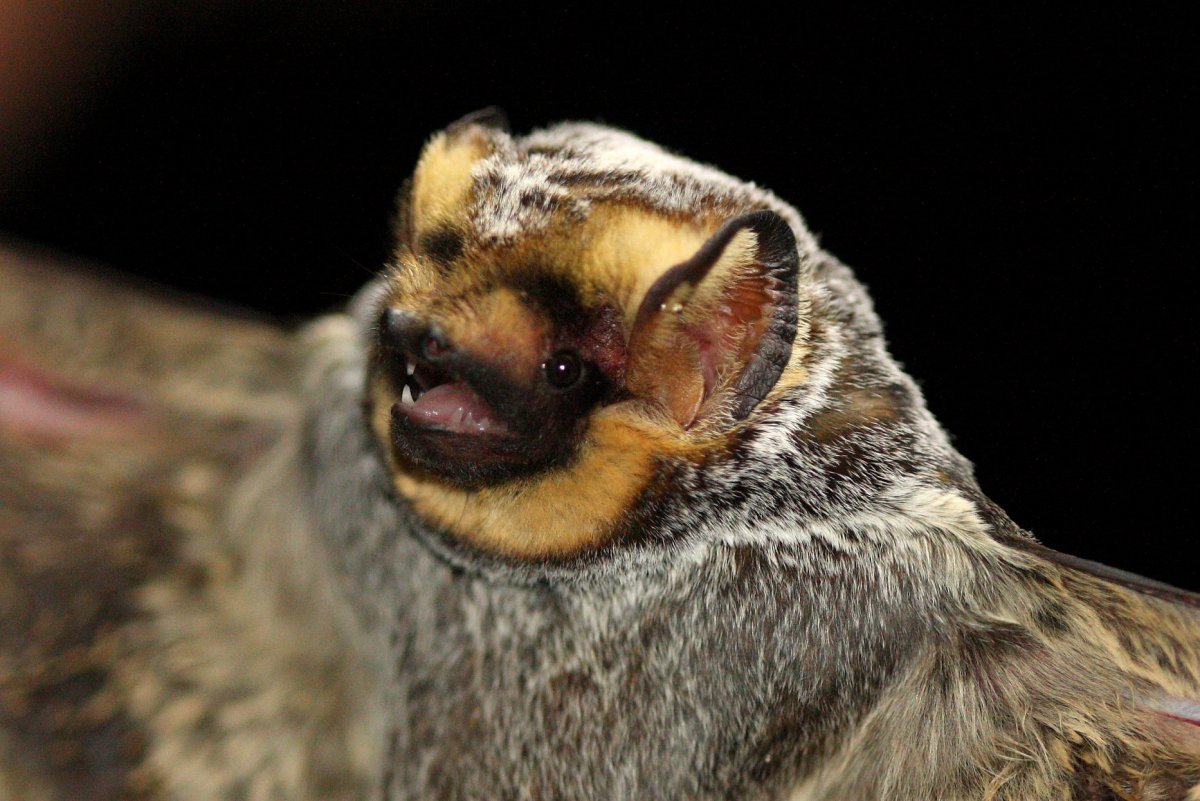
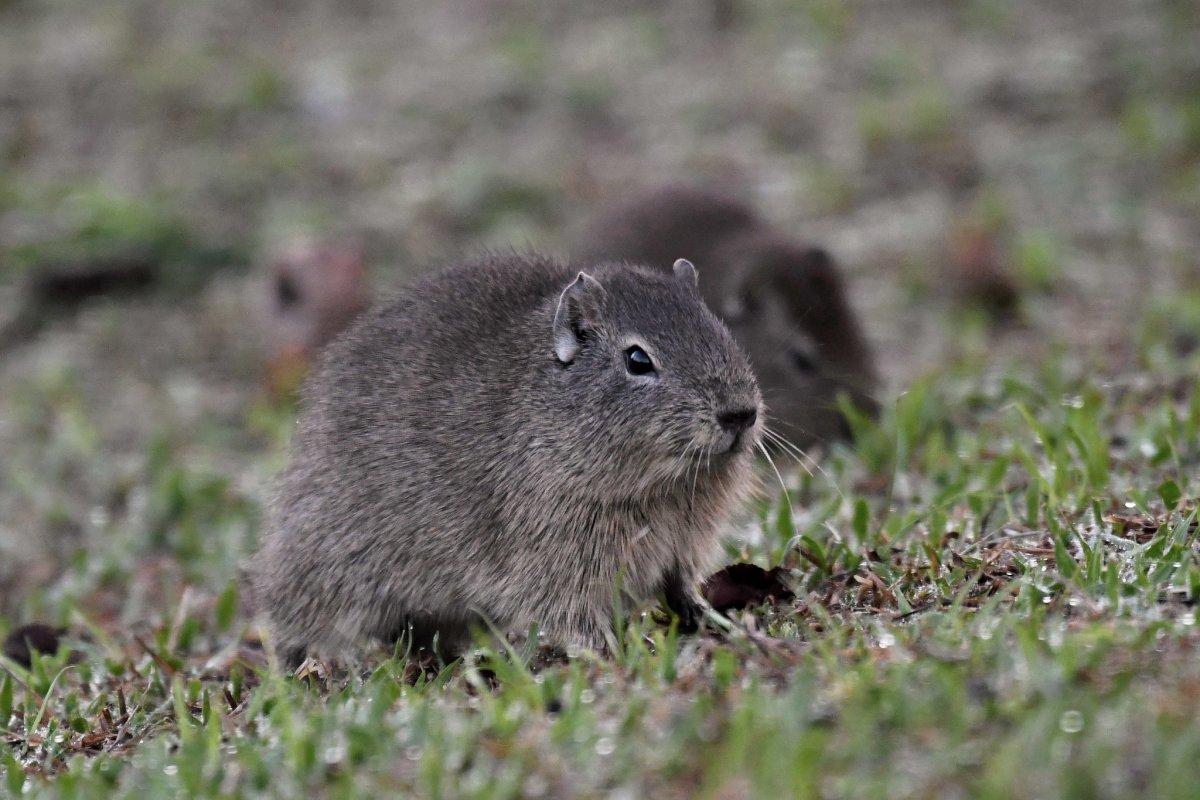
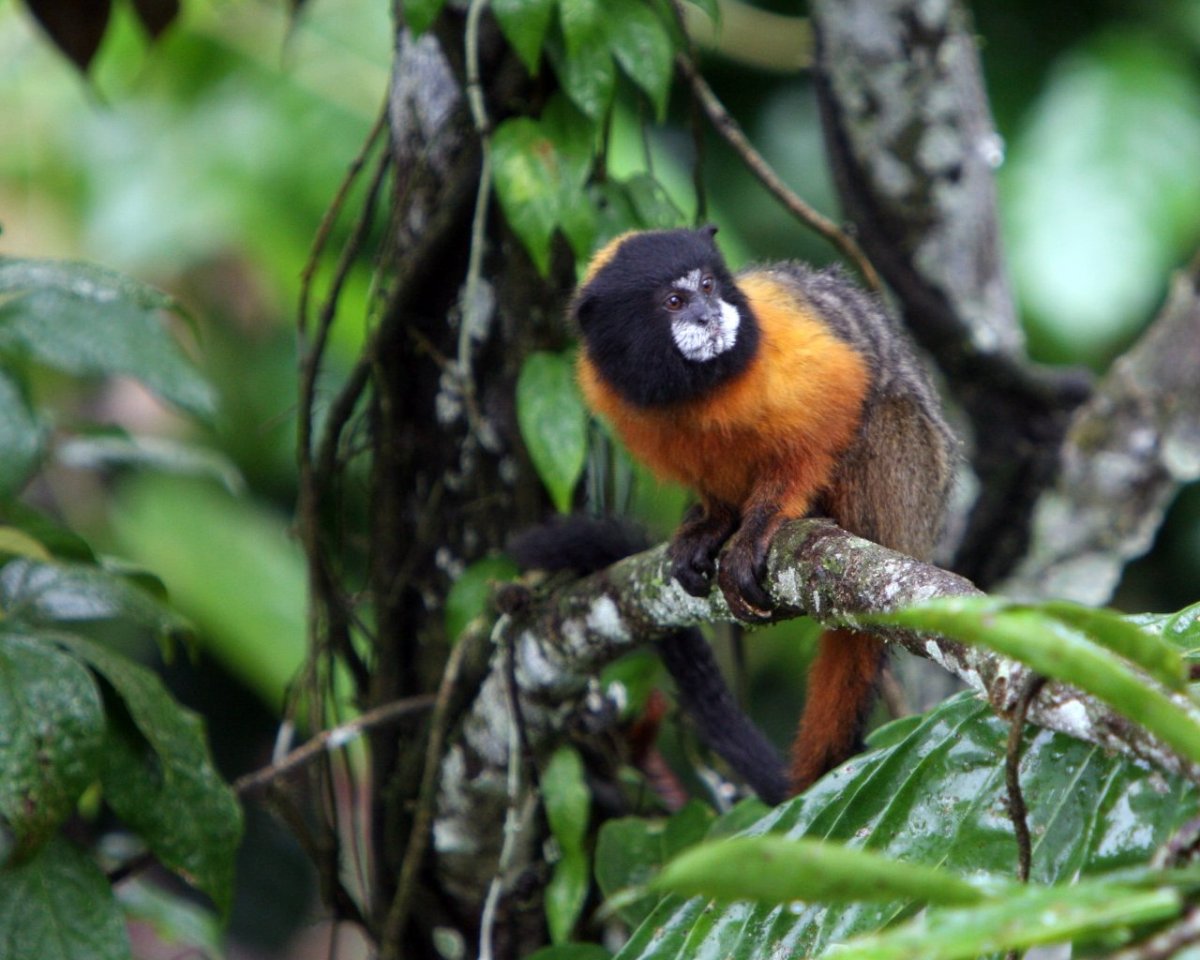
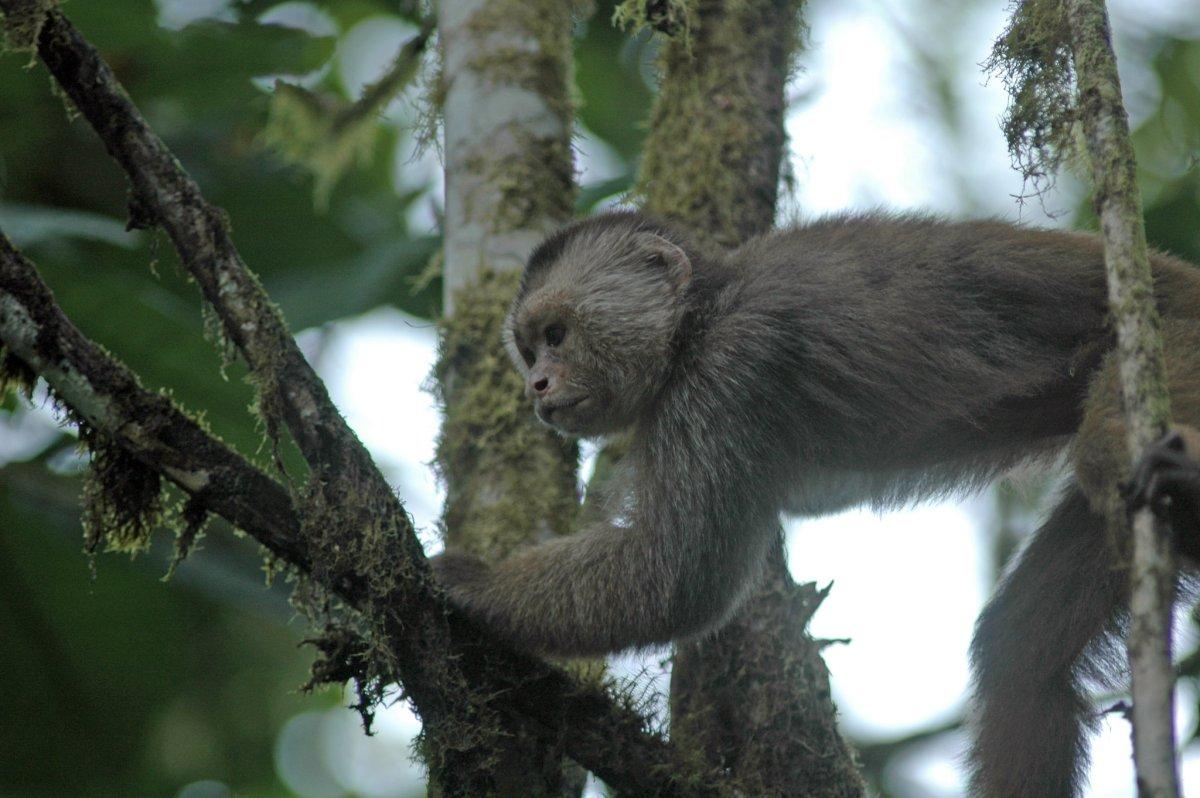
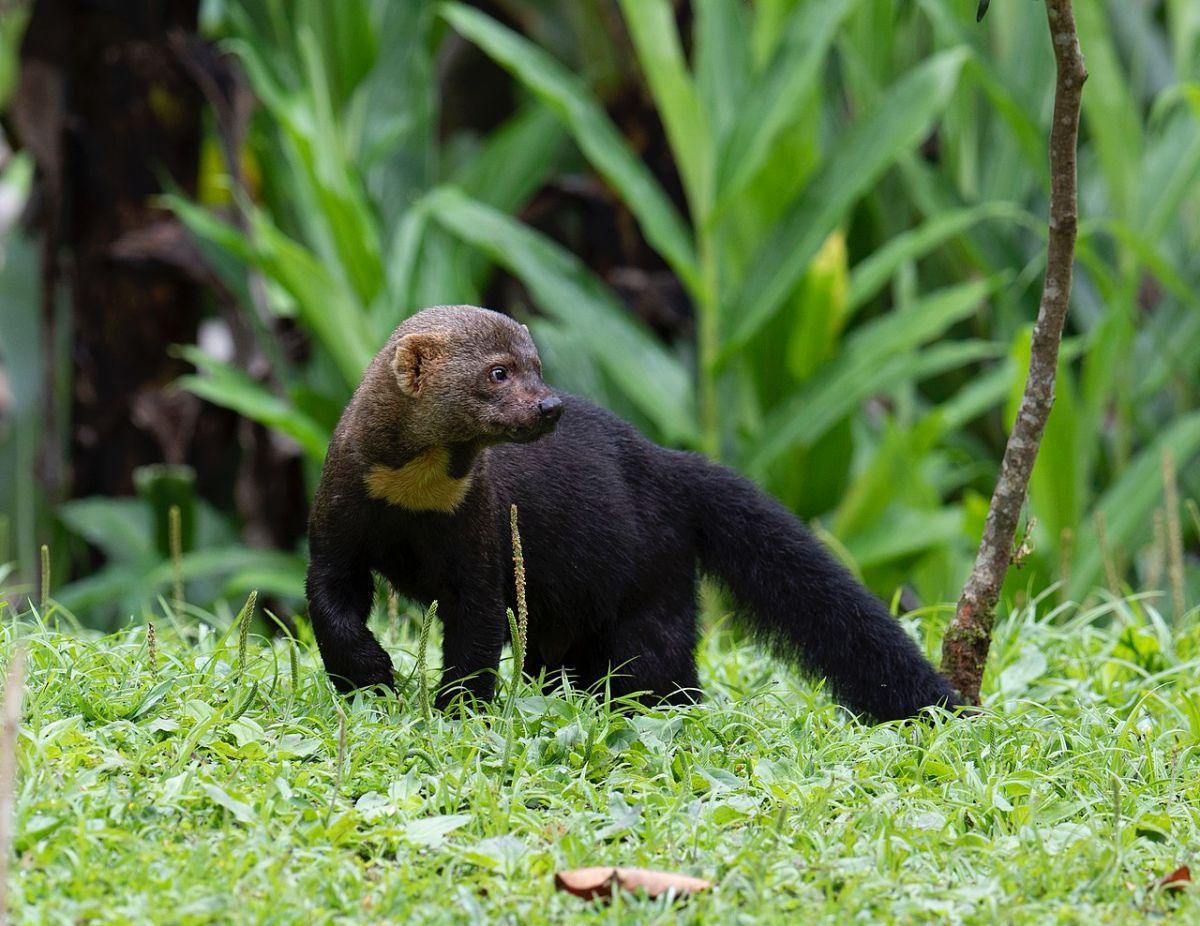
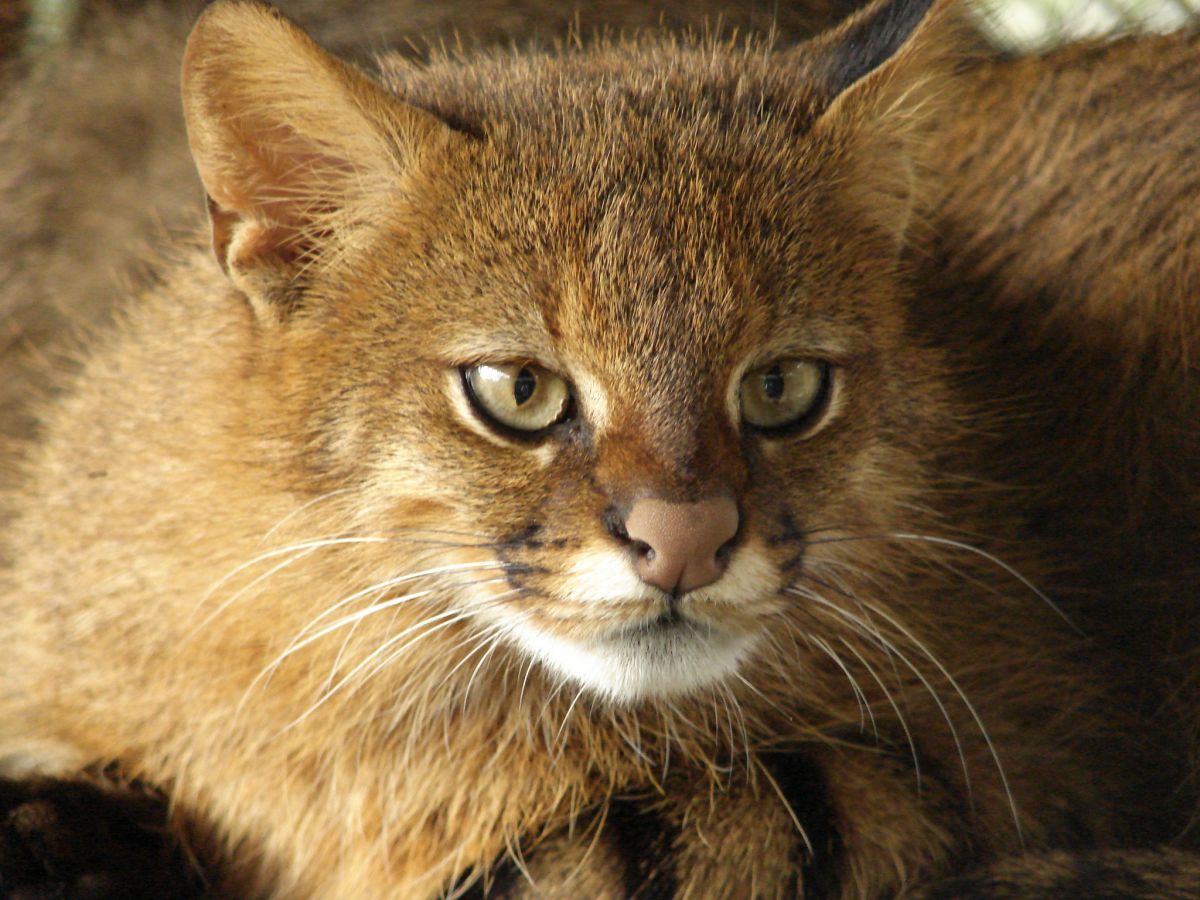

![15 Wild Animals in Honduras [Wildlife in Honduras]](https://www.kevmrc.com/wp-content/uploads/2022/08/15-wild-animals-in-honduras.jpg)
![21 Wild Animals in The Dominican Republic [Wildlife in The Dominican Republic]](https://www.kevmrc.com/wp-content/uploads/2022/06/21-wild-animals-in-the-dominican-republic.jpg)
![21 Wild Animals in Azerbaijan [Wildlife in Azerbaijan]](https://www.kevmrc.com/wp-content/uploads/2022/06/21-wild-animals-in-azerbaijan.jpg)